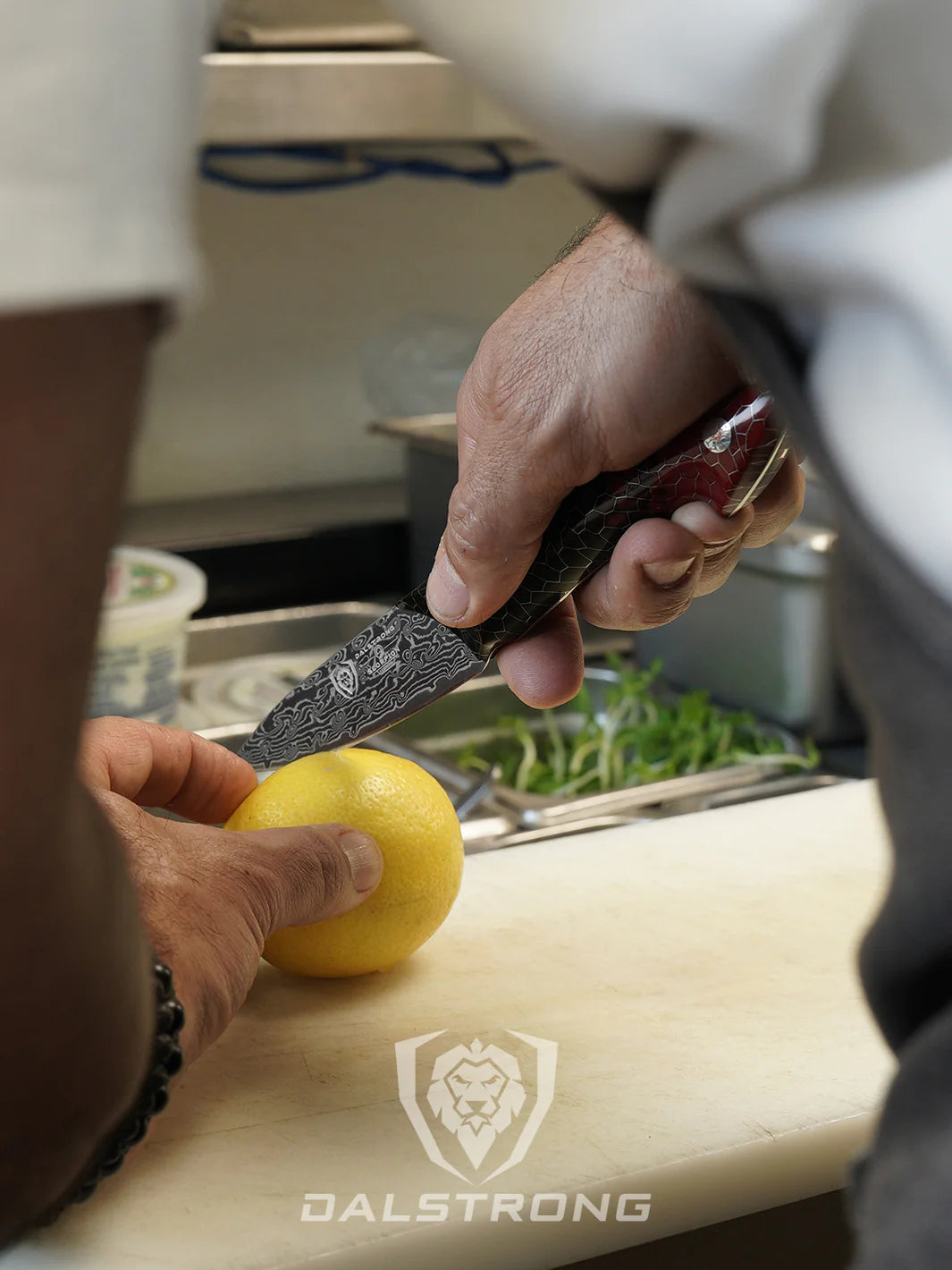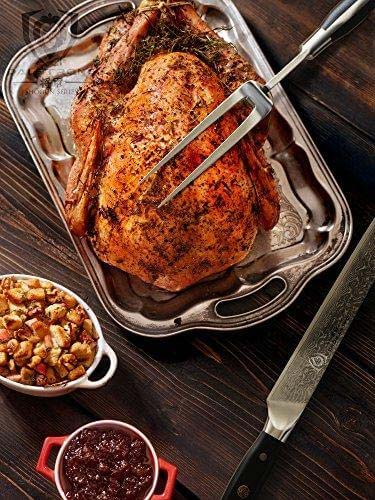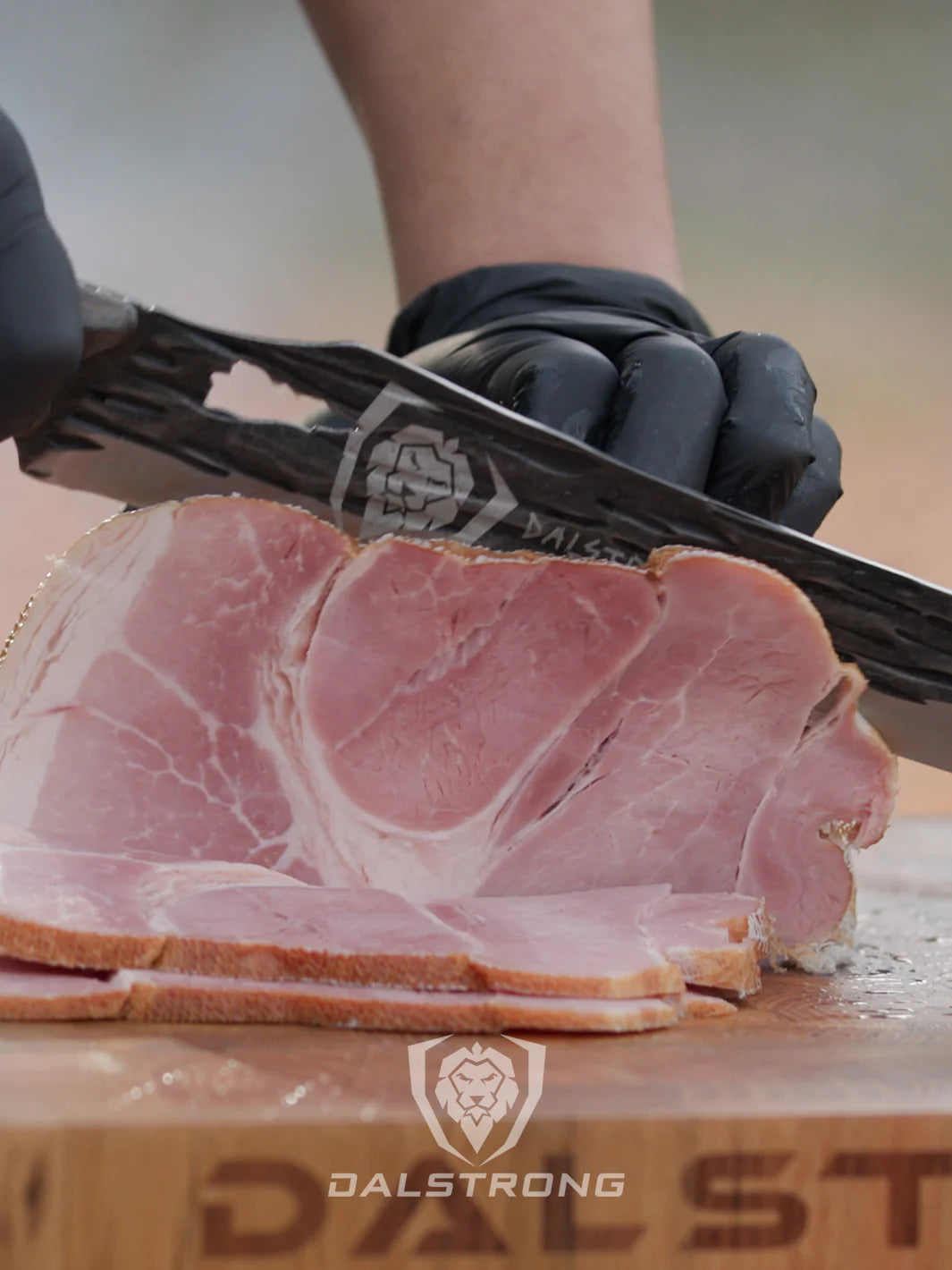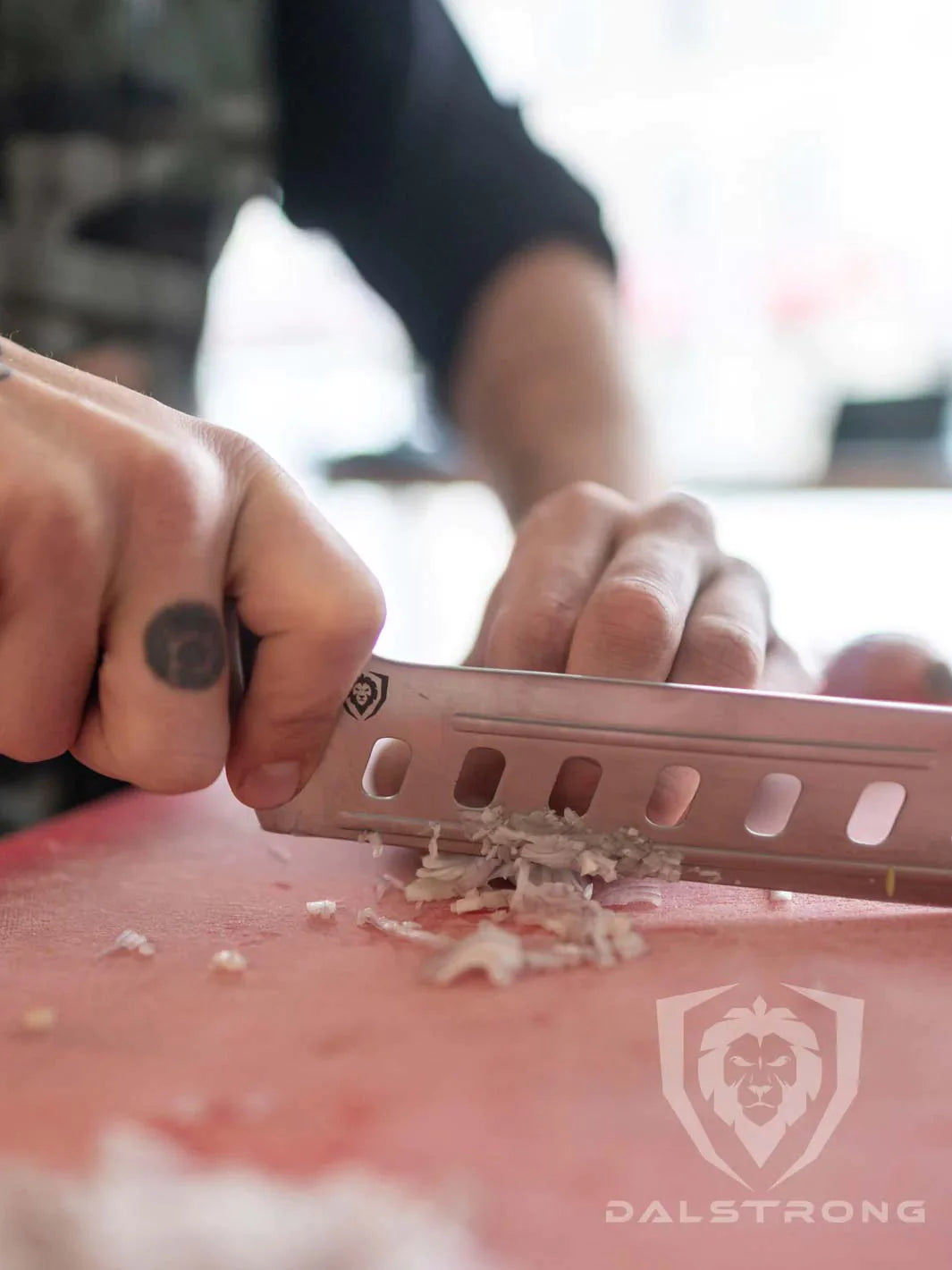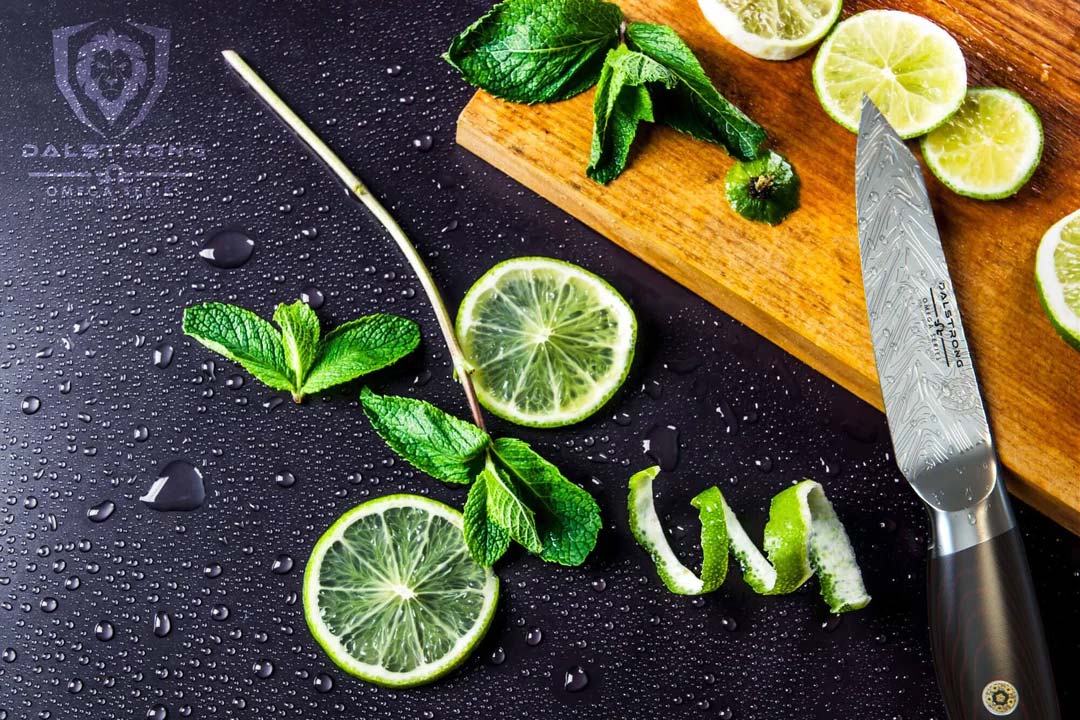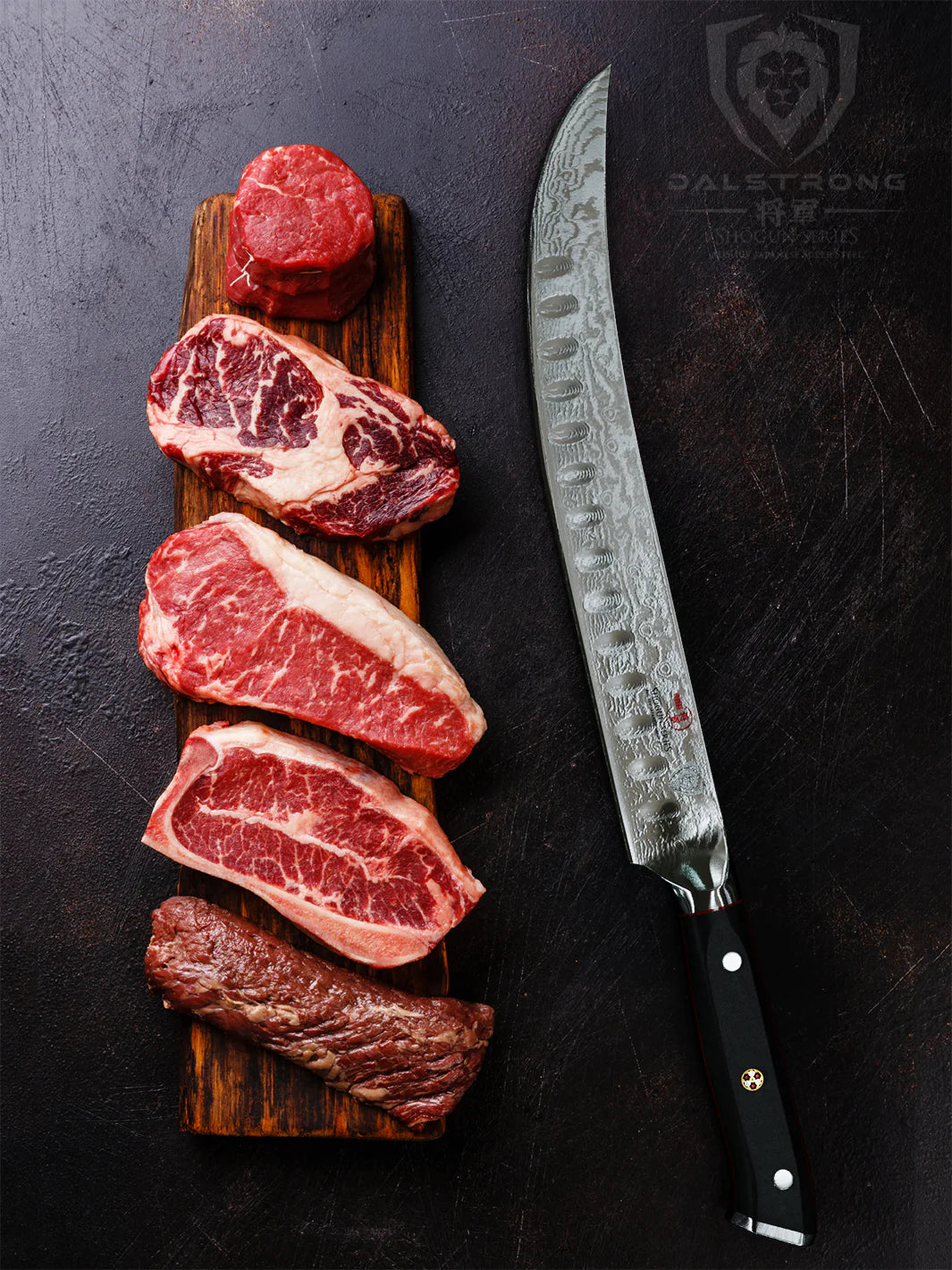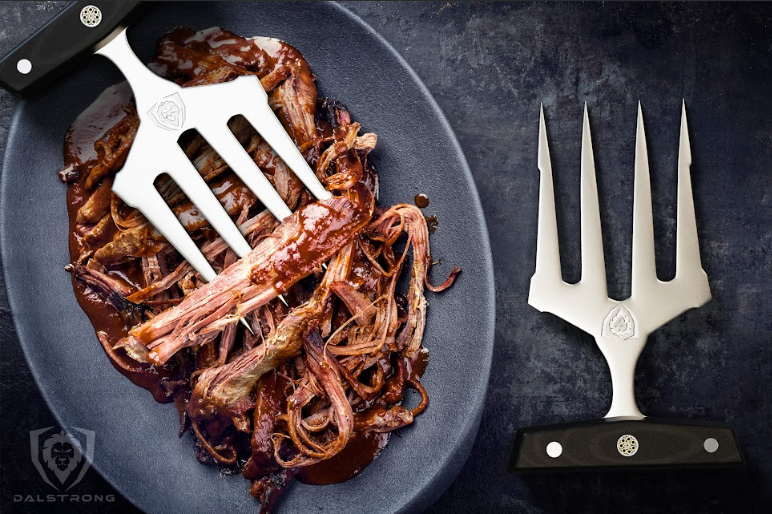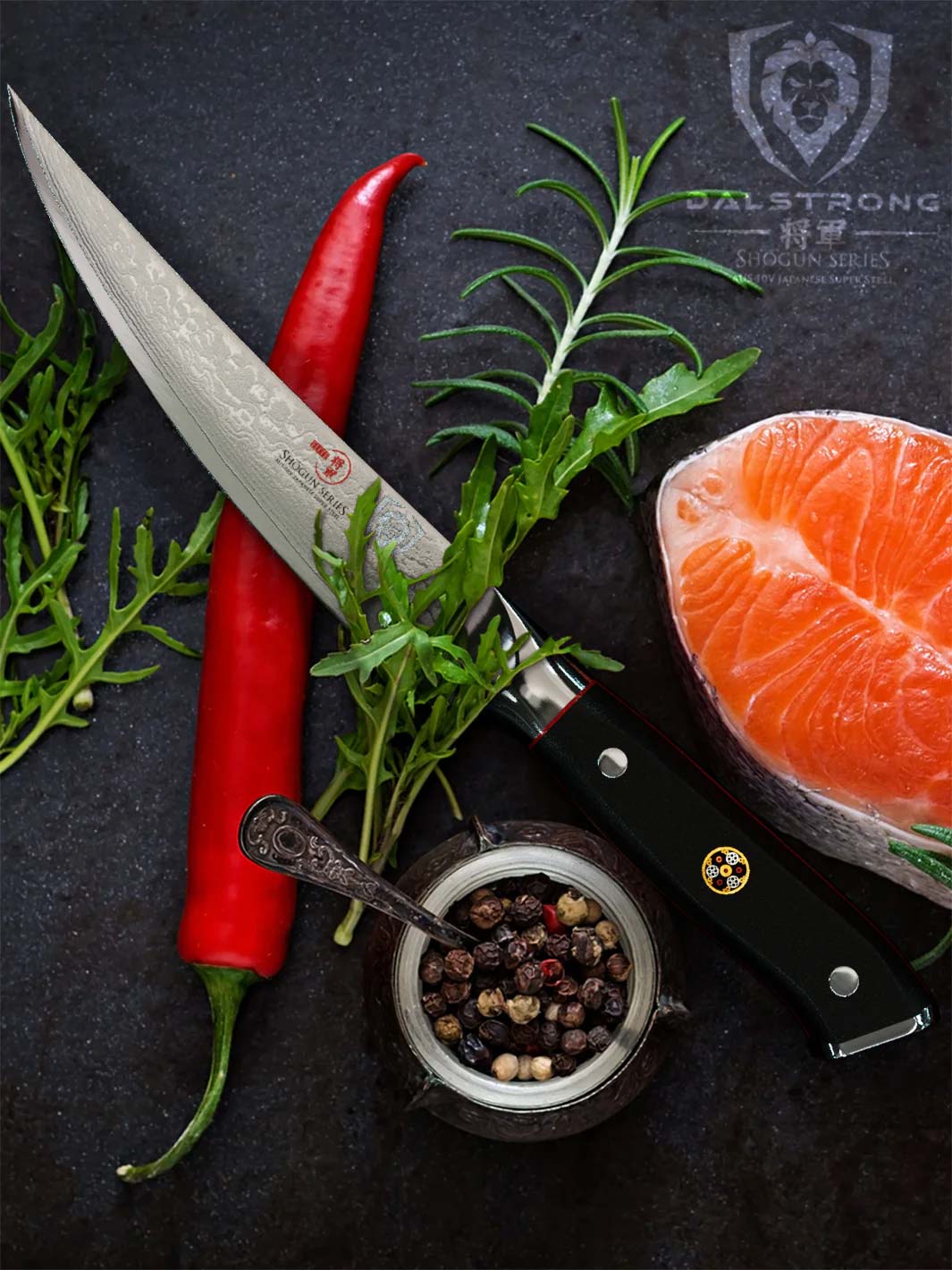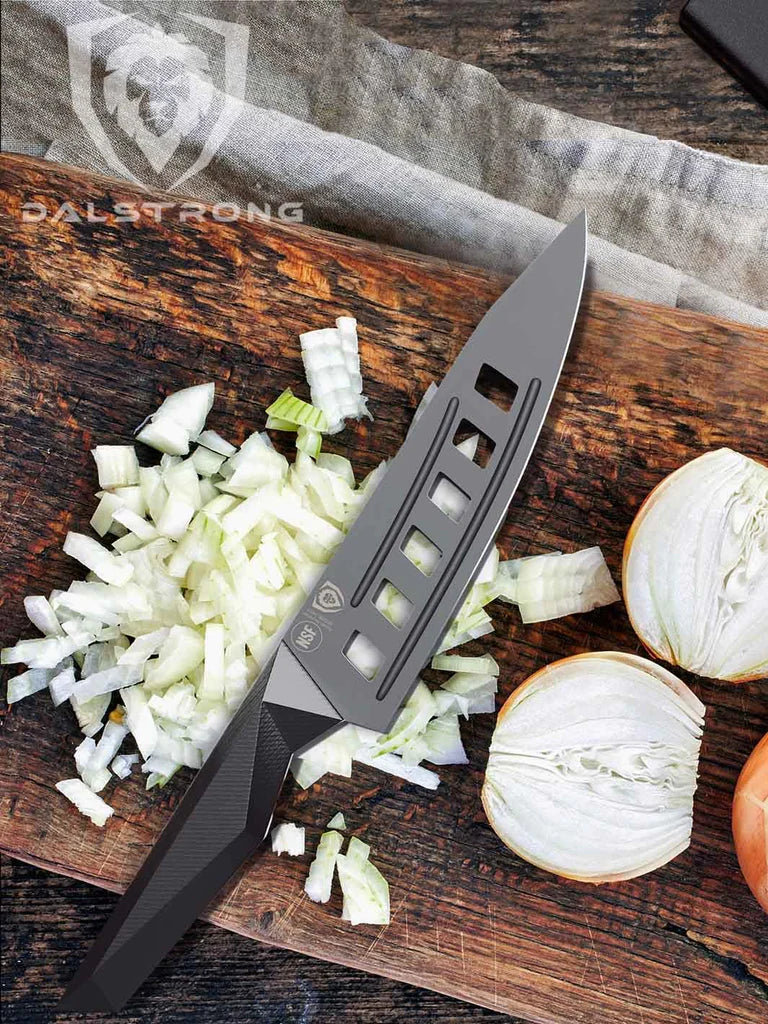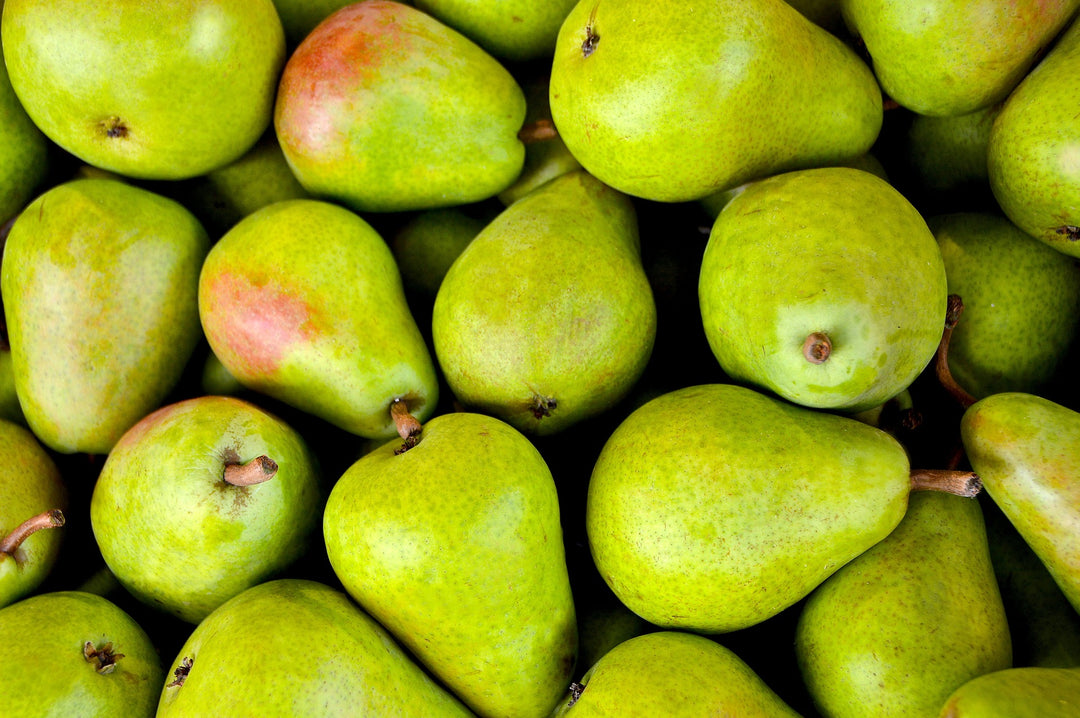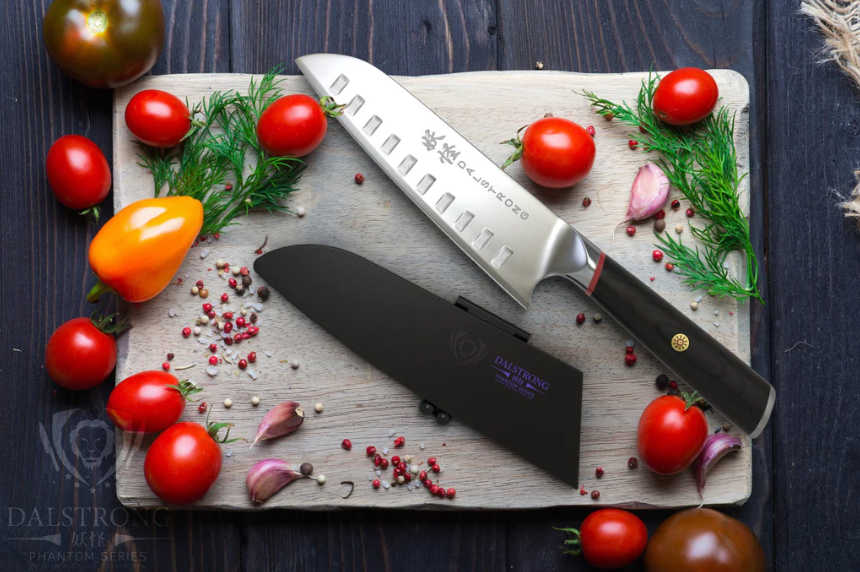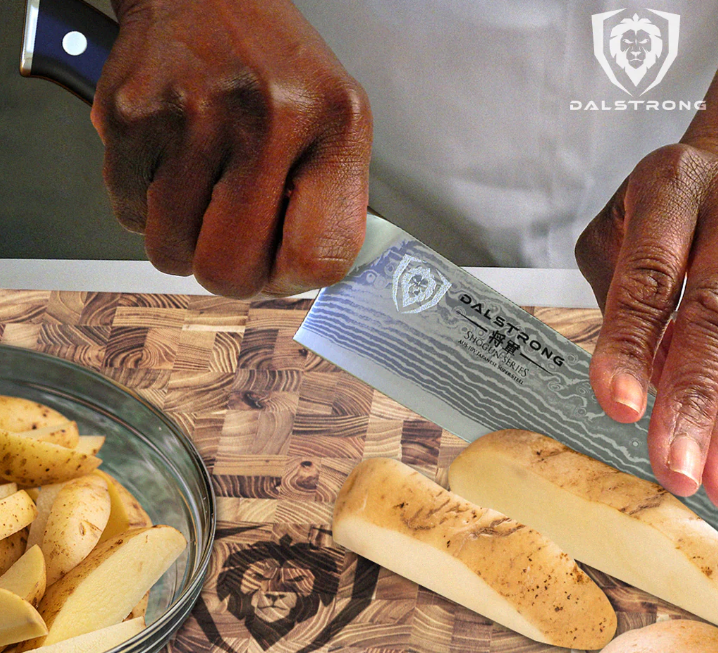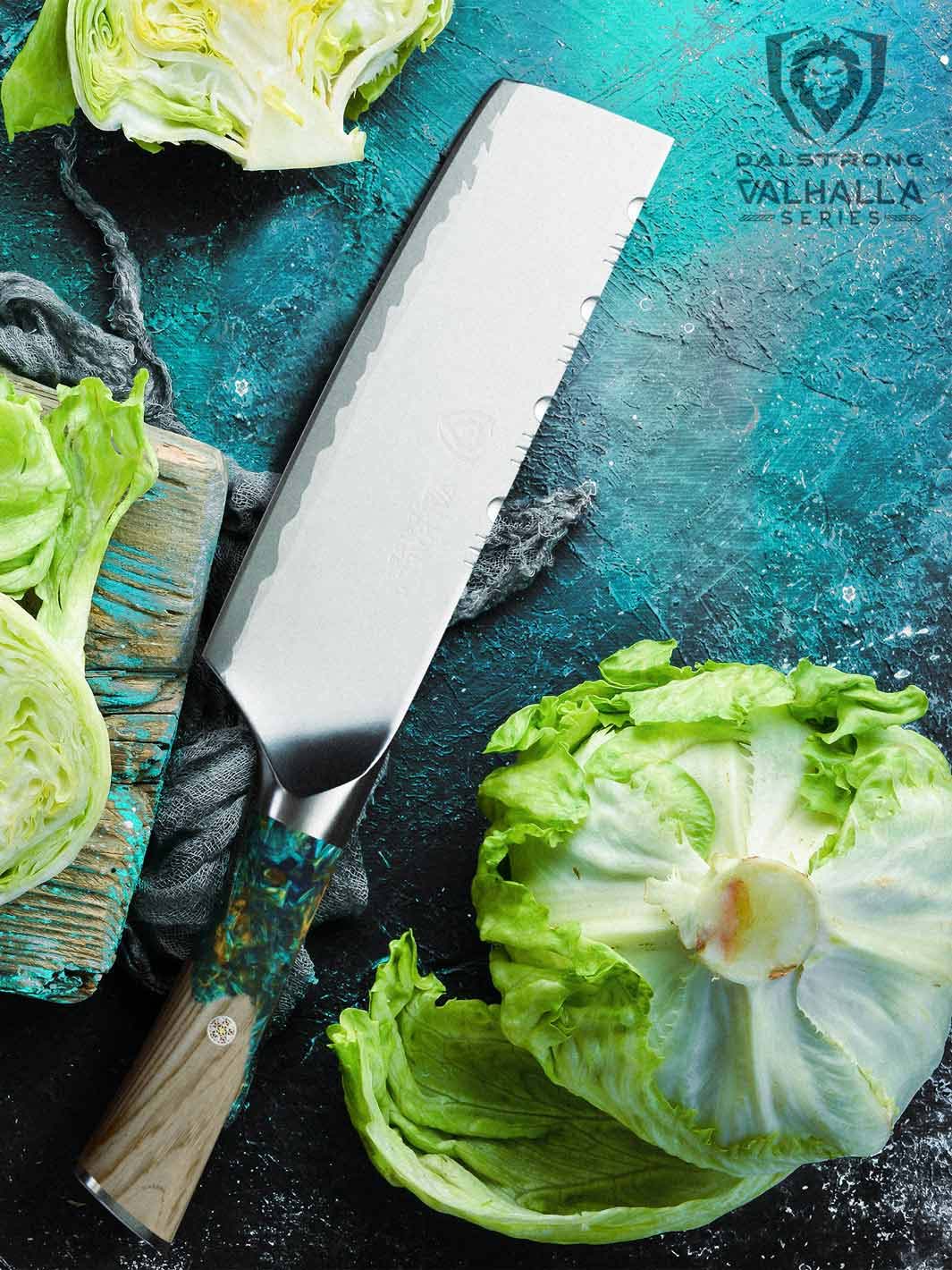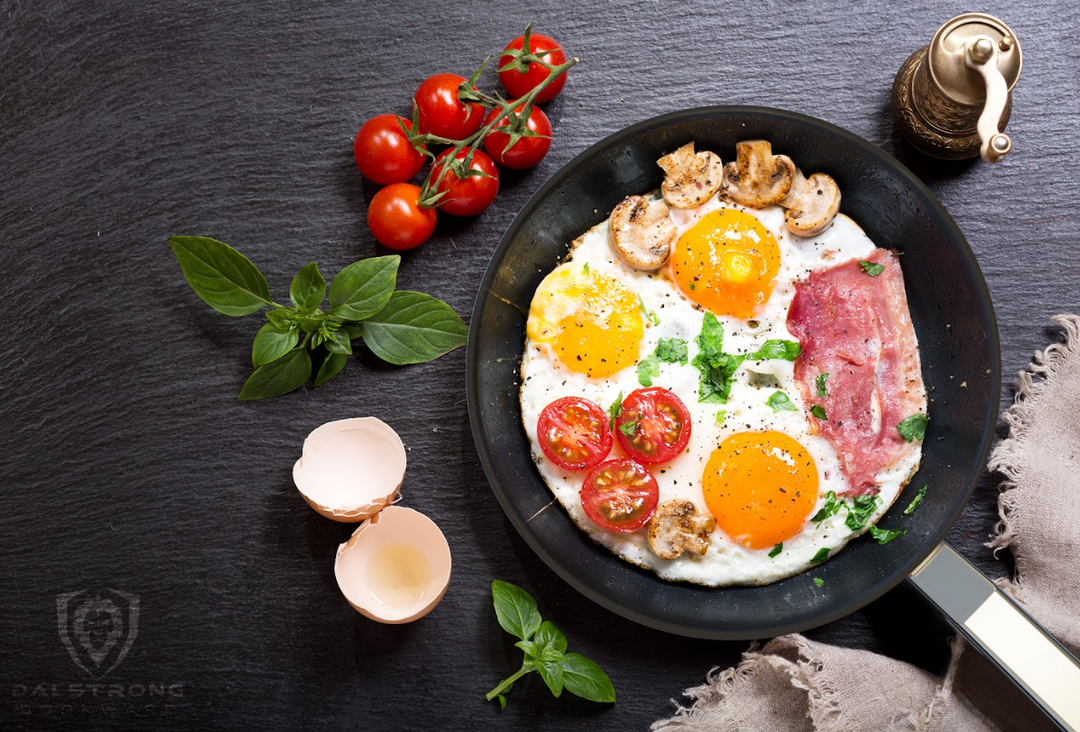Here's the Best Way to Prevent Cuts in the Kitchen
 Chef's Knife 8" | Valhalla Series | Dalstrong
Chef's Knife 8" | Valhalla Series | Dalstrong
Ever wondered how to maintain a safer kitchen without the risk of your fingers getting a surprise trim? It's easy if you know what to expect.
1. The Culinary Dance And Its Missteps
Diving into the world of cooking is like waltzing into a grand ballroom. The glistening pots and pans are your dance partners, and the hum of kitchen appliances creates a rhythmic backdrop. It's all very poetic -- each step, each swing, each sauté feels just right.
But sometimes, amidst this culinary ballet, our immersion blender decides to break the rhythm with an unexpected tango with our chef knife. And before you know it, you're not just dealing with a culinary misstep, but your unsuspecting fingers are the unexpected casualties of this dance.
Okay, the ballroom metaphor is starting to fall apart now, but you get the point: it's easy to get nicked in the kitchen and to end up injured. Thankfully, there are ways to prevent this. Let's embark on a journey to keep the dance graceful and, most importantly, safe!
2. Most Common Kitchen Accident With Knives
 Paring Knife 3.5" Shogun Series ELITE | Dalstrong
Paring Knife 3.5" Shogun Series ELITE | Dalstrong
It's not just about being wary of a falling knife; there are various situations where that sharp blade might just catch you off guard. Here's a comprehensive list of potential knife scenarios that could lead to accidents and some tricks to help you steer clear of them and avoid cutting yourself.
Dicing rounded vegetables and fruits
Sneaky culprits like tomatoes and apples can be tricky due to their slippery surfaces. A good workaround? Slice a small portion off the bottom to create a flat surface. This stabilizes the fruit or vegetable, reducing the risk of the knife slip.
Carving a pumpkin
It's all fun and games until your knife gets stuck in thick pumpkin skin. Make sure to use a sharp, serrated knife for better control. Hollow out the pumpkin well to reduce resistance.
Cutting meat, especially with bones
This can be challenging, especially when the knife hits a bone. Always use a proper chef knife or boning knife, and if the meat is too slippery, use a kitchen towel to hold it in place.
Peeling vegetables
A common scene for kitchen knife injuries, as peeling requires holding the knife close to the fingers. Use a vegetable peeler instead or ensure the knife blade faces away from you.
 Bread Knife 8" | Frost Fire Series | NSF Certified | Dalstrong
Bread Knife 8" | Frost Fire Series | NSF Certified | Dalstrong
Slicing bread
You'd think this is simple, but a soft loaf can be deceptive. Always use a serrated knife and gentle sawing motions, applying minimal downward pressure.
Chopping herbs
Those fresh, delicate leaves can often lead to the blade getting too close to fingers. A workaround? Bunch them together and employ the "claw grip" -- holding the herbs while tucking your fingers inward.
Separating frozen foods
It’s a temptation to pry them apart with a knife, but resist! Instead, let the foods thaw slightly or use a kitchen tool designed for the task.
Opening packages
We've all been there -- using our kitchen knife as a makeshift letter opener. This can lead to unexpected slips. Maybe use scissors or an actual letter opener.
Cleaning the knife
Washing a sharp blade can be risky, especially with soapy, slippery hands. Always hold the knife by its handle, cleaning from the base to the tip away from you. And remember the rebellious orange incident with a dull knife? Keep those knives sharp -- it's safer!
Storing the knives
Throwing knives into a drawer with other utensils is an accident waiting to happen. Utilize a knife block or magnetic strip to store them safely.
By being aware of these scenarios and using these tricks and workarounds, you can significantly reduce the risk of injury while working with kitchen knives. It's always better to be safe than sorry (or a finger short).
3. Basics Of Kitchen Safety
 Butcher's Breaking Cimitar Knife 10" Shogun Series ELITE | Dalstrong
Butcher's Breaking Cimitar Knife 10" Shogun Series ELITE | Dalstrong
Think of your kitchen as a stage. With the right moves, the show goes on smoothly, but a misstep can lead to an unexpected curtain call. Here's a more detailed guide on the fundamentals of kitchen safety:
Sharp knife > dull knife
It sounds unreasonable, but a sharp knife is your best ally. Imagine trying to slice a ripe tomato with a dull blade -- the pressure you apply can cause the knife to slip, increasing the risk of injury. A sharp knife, on the other hand, glides through with minimal force, giving you control and precision.
Fire extinguisher
While it may not directly protect your fingers, it's an essential tool to safeguard your entire kitchen. Picture this: you're frying something, oil splatters, and suddenly your kitchen towel is aflame. With a fire extinguisher within arm's reach, you can quickly douse the flames, preventing larger mishaps.
Oven mitts and pot holders
Remember the first time you grabbed a hot pot without an oven mitt? Bet it was a lesson learned the hard way. These protective gears act as a barrier between your delicate skin and scalding cookware. It's not just about avoiding burns; it's about maintaining a grip. Dropping a pot full of hot soup is both a safety hazard and a heartbreaking loss of a good meal.
 Lionswood Colossal | Teak Cutting Board
Lionswood Colossal | Teak Cutting Board
Cutting boards are your friends
Consider them your kitchen's unsung heroes. Investing in a good-quality cutting board -- or better yet, a few for different food items -- ensures a stable cutting surface. Remember, a sliding board is a chef's nemesis. Thankfully, here are a bunch of great cutting boards for you to look into.
Organize, don’t agonize
Keeping your cooking equipment and ingredients organized can prevent many accidents. Ever tripped over a pot or got startled by a lid clattering to the floor? A place for everything, and everything in its place.
Careful around glass
Broken glass is like a minefield in the kitchen. Always ensure glass items, like measuring cups or bowls, are stored safely. If something breaks, wet a kitchen towel and use it to pick up the shards. The dampness helps collect even the tiniest fragments.
Watchful cooking
Never leave cooking unattended, especially when dealing with hot oil or boiling water. Distractions might lead to overflows, burns, or even fires. The mantra? If you're cooking, you're looking!
These basics, when practiced diligently, pave the way for a harmonious, efficient, and safe culinary experience. After all, it’s not just about the delicious end result, but also about savoring the journey there.
Read about how to clean a knife, here.
4. The Best Way To Prevent Cuts In The Kitchen
Beyond the basics, there's an art to mastering kitchen safety that transforms an ordinary cook into a seasoned chef.
Master your tools
Every maestro knows their instruments. Be it a serrated knife for that crusty loaf, a paring knife for intricate peeling, or a chef knife for dicing and mincing, each tool has its purpose. And, just as you wouldn’t play a violin with drumsticks, you wouldn’t slice bread with a filleting knife. Respect and understanding of your tools are pivotal.
The zen of a kitchen
Inner peace might be challenging, but outer peace, aka an organized kitchen, is wholly achievable. Think of clutter as mental fog -- it hampers efficiency and increases danger. Have designated spaces for your pots, pans, and kitchen appliances. No one likes stepping on broken glass; neither should they trip over a stray pot.
Safety nets and First Aid
Even the most experienced climbers use safety nets. Your kitchen’s safety net? A well-equipped First Aid Kit. But, having a kit isn't enough; understanding its components is vital. Know the difference between an antiseptic wipe and a sterile bandage. And remember, direct pressure is a bleeding’s worst enemy. Familiarize yourself with basic first aid -- it's like having a culinary insurance policy.
Safety habits
Cultivate habits that become second nature. Tucking those fingers while dicing onions or using a kitchen towel to grip a slippery avocado ensures your digits remain intact. And as for that falling knife -- picture it as a diva making a dramatic exit. Let it have its moment; don't try to intercept. Save your applause (and your fingers) for later!
Continuous vigilance
Always anticipate potential kitchen mishaps. The pot might overflow, oil might splatter, or that immersion blender might have a mind of its own. Stay on your toes, and be prepared to make the necessary course corrections.
Embrace a learning attitude
Every chef, from the newbie home cook to the Michelin star maestro, has had their share of kitchen blunders. Instead of getting disheartened, treat them as learning opportunities. Did you burn yourself while trying to retrieve a toast? Lesson learned: use tongs next time.
5. Recommended Dalstrong Knives
1. Chef's Knife 8" | Shogun Series ELITE
For every serious chef, this knife is the cornerstone of culinary craftsmanship. Immerse in the power of a 66-layer Damascus design with a Japanese Super Steel Core. This knife is a testament to safety, functionality, and artistry, ensuring your kitchen remains a sanctuary of delightful dishes. Its sleek design promises not only precision but an added layer of protection, making every slice, dice, or chop a seamless experience.
PROS:
- Features an Aus10V Japanese Super Steel core, guaranteeing a strong, razor-sharp blade that's less likely to cause accidents from unnecessary force.
- The hammered Tsuchime finish, coupled with a 66-layer Tsunami Rose Damascus pattern, ensures durability and prevents food from sticking, reducing the risk of knife injuries.
- Equipped with a tapered bolster, it promises pinch grip perfection, balancing the blade and safeguarding fingers.
- The non-slip grip of the military-grade G10 handle ensures a firm hold, reducing chances of knife slip, even in the bustling humidity of the kitchen.
CONS:
- It's an extremely beautiful knife, but not everyone is a fan of the Damascus pattern.
- Given its meticulous construction and high-end materials, it sits on the pricier side of the chef's knife spectrum.
2. Slicing & Carving Knife 12" | Shogun Series ELITE | Dalstrong
This 12 inch slicer is the masterful blade for those large culinary conquests. Perfect for your briskets, sumptuous roasts, or even that delicate salmon, its razor-sharp edge promises paper-thin, consistent slices every time. Beyond its slicing prowess, this knife's design and materials scream safety, ensuring your fingers stay as far from harm as possible.
PROS:
- With its AUS-10V Japanese super steel core, this knife promises amazing performance, reducing chances of slip-ups that can lead to injuries.
- The rock hollow divots ensure minimal friction, preventing food from sticking, and allowing smooth and safe cuts.
- Its ergonomic military-grade G10 handle assures both life-long durability and a non-slip grip, guaranteeing a safer culinary experience.
- The tapered bolster not only ensures a balanced grip but also provides that extra finger protection, keeping them clear of the blade's path.
CONS:
- This is a pretty large knife, and might be too large for some home cooks.
- Its specialization might not be ideal for those looking for a more all-around kitchen tool.
3. Paring Knife 3.5" | Gladiator Series | NSF Certified | Dalstrong
When it comes to kitchen finesse, sometimes smaller is better. This paring knife is like the agile gymnast of the culinary world. Small, but mighty, it's your go-to for those intricate tasks where precision is paramount. Whether you're dicing tiny shallots, peeling a stubborn fruit, or making artful incisions in pastry dough, this knife's got your back. And hey, it doesn’t just look good; it’s crafted to ensure you're as safe as can be with every slice and dice.
PROS:
- Precision-forged from high carbon German Steel, it has great balance between razor-sharp edge retention and resilience.
- The knife’s tall blade height offers that much-needed knuckle clearance, ensuring safety during fast-paced chopping.
- With its G-10 Garolite handle, it's not just about grip and comfort; it's about ensuring a heat and moisture resistant grip that lasts a lifetime.
- National Sanitation Foundation (NSF) certification assures you're getting a knife that meets strict safety standards for your kitchen.
CONS:
- While perfect for detailed tasks, its size might not be the go-to for larger chopping needs, especially when compared to the all-rounder Chef’s knife.
- Some folks might prefer the Birds Beak variety of paring knife.
4. Fillet & Boning Knife 6.5" | Phantom Series | Dalstrong
The Dalstrong Phantom Series Fillet & Boning Knife doesn't just make the cut; it excels. Designed for the passionate chef who wants to get every ounce of flavor from their meats, this knife glides along bones and slices between joints like it's dancing on ice. With a blade that's as stunning as it is sharp, and a handle designed for ultimate control, this is the kitchen companion you've been waiting for.
PROS:
- Crafted from Japanese AUS-8 steel, it ensures swift cuts with its razor-sharp 13-15 degree edge.
- Divots on the blade help reduce friction, ensuring the knife doesn't stick to food, enhancing safety with smoother cuts.
- The traditional Japanese D-shaped handle offers great control, agility, and comfort, ensuring a safer grip during intricate tasks.
- It's a beauty, too, with intricate brass and copper "phantom spirit" mosaics adorning the handle, setting it apart from the rest.
CONS:
- While the partial tang provides balance, some might prefer the robustness of a full tang.
- The specialty design might not be the first choice for broader, everyday tasks, especially if you're looking for a more general-purpose knife for regular chopping.
5. Santoku Knife 7" | Valhalla Series | Dalstrong
Steeped in ancient lore and blended with modern craftsmanship, the Santoku Knife from the Valhalla Series isn't just another knife in your kitchen; it's a testament to your commitment to the culinary arts. Harnessing the three virtues of slicing, dicing, and mincing, this knife embodies precision, performance, and panache. Designed to conquer challenges, it features a high-carbon, 5-layer steel that effortlessly glides through meat, fish, and vegetables.
PROS:
- The 5-layer stainless steel blade, with a hardness of 60±1 Rockwell, ensures durability and maintains its sharp edge for extended periods.
- With an edge hand-sharpened to 8-12° per side, precision and safety in slicing are guaranteed, preventing accidental slips and cuts.
- The resin and stabilized wood handle, designed for shock absorbance, ensures comfort, grip, and stability, minimizing potential mishaps during intense kitchen action.
- Basically, it looks awesome. With a beautiful sandblasted finish and a Valhalla-embossed leather sheath that screams quality and style.
CONS:
- Some might find its design a bit much, especially when compared to simpler, more traditional knife designs.
- The unique sandblasted finish, while gorgeous, might need a bit more attention during cleaning compared to smoother finishes.
6. Frequently Asked Questions
How can I prevent finger cuts?
Basically, the best way to prevent finger cuts is to stay committed to safety, use proper cutting techniques, and always pay attention.
Are chef knives more dangerous than other kitchen knives?
All knives, if misused, can lead to serious injury. It's about how you handle them.
Should I keep a fire extinguisher even if I’m just cutting fruits?
It's always good to have a fire extinguisher in the kitchen. You never know when a cooking equipment might malfunction or if an unexpected fire pops up.
How do restaurant workers stay safe?
Restaurant workers practice safe techniques and are always paying attention to their surroundings.






















































































































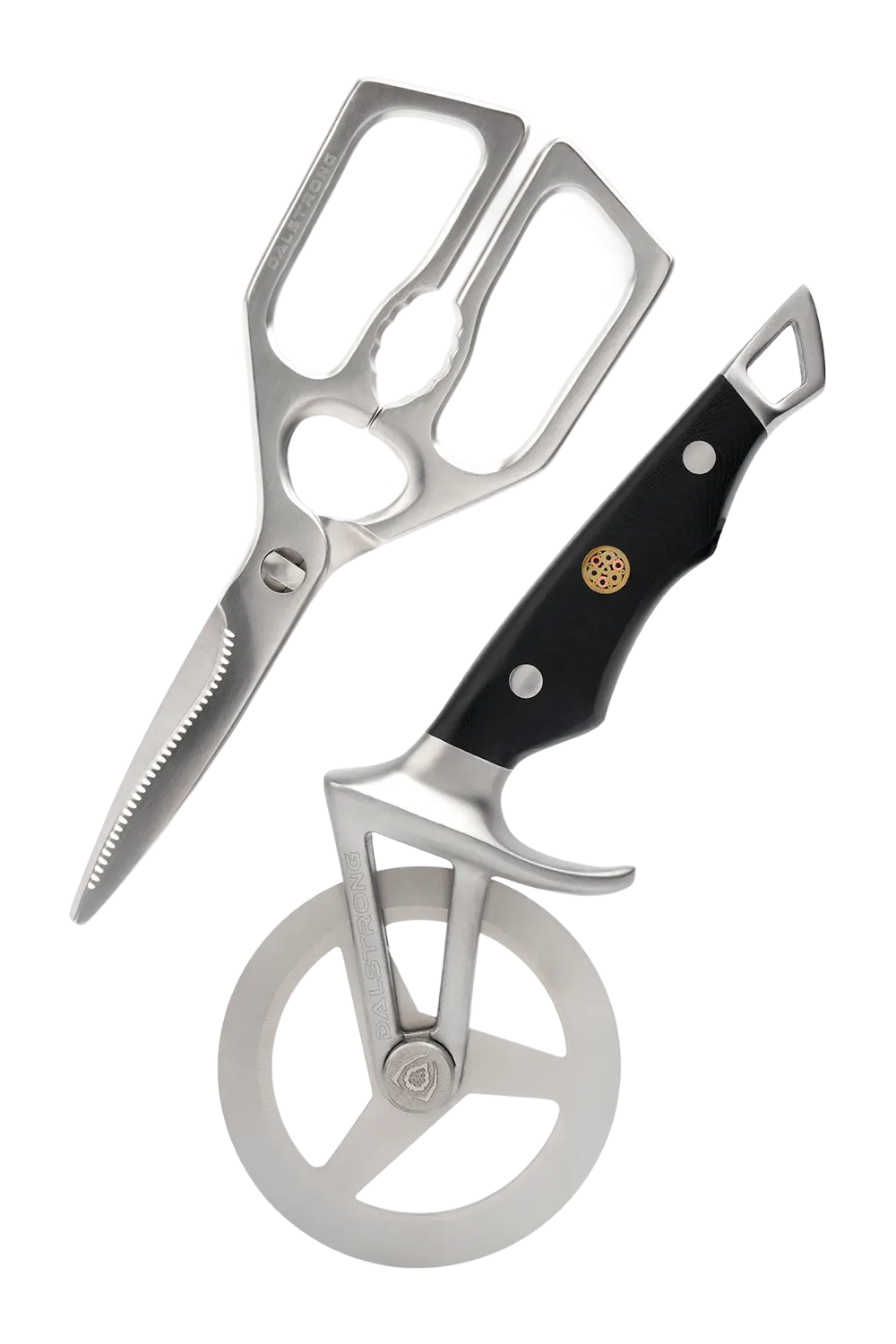

























 4-Piece Straight-Edge Steak Knife Set | Glacial White ABS Handles | Gladiator Series | NSF Certified | Dalstrong
4-Piece Straight-Edge Steak Knife Set | Glacial White ABS Handles | Gladiator Series | NSF Certified | Dalstrong




















